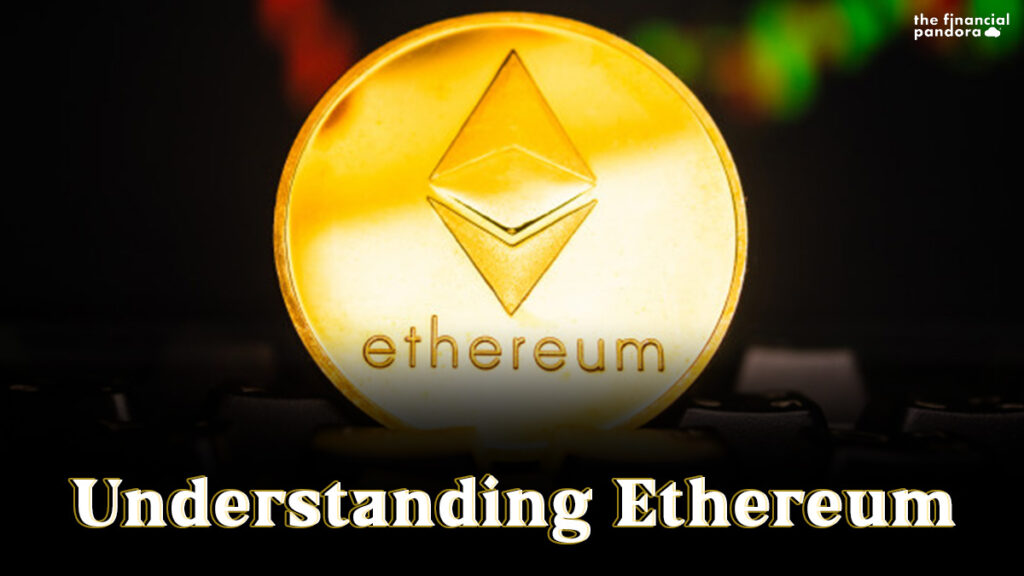Over the past decade, Cryptocurrency has slowly yet steadily been able to creep into our life. There was a time this conversation was restricted to a select few in the crypto-enthusiastic circle. Now you would have to live under a rock not to have at least heard its mention. So, as Bitcoin price continues to reach new earlier unthinkable height, the second-largest cryptocurrency Ethereum commendable growth has largely gone unnoticed. So, let unfold this topic and understand Ethereum a little better.
What is Ethereum?
Ethereum is a platform composed of multiple decentralized computers spread across the globe that form its network. Just like how Bitcoin uses blockchain technology, Ethereum too works on a similar principle. In the bitcoin system, every computer has a copy of the shared ledger and acts as a node. When a transaction is carried out between two parties, these computers simultaneously verify, validate and execute the transactions. When the transaction is successful, they add a new block to the blockchain.
You may read more about the basic of the working of cryptocurrency here: https://thefinancialpandora.com/basics-of-cryptocurrency/
Ethereum, like bitcoin, can be a medium for exchanging value, but it is so much more. Ethereum has the feature where you can program smart contracts, make immutable financial agreements, and it can also act as a registry ensuring rightful ownership for any physical or digital assets. Non-Fungible tokens or NFTs are a prime example of this registry.
You may read more about the NFTs in my article here: https://thefinancialpandora.com/non-fungible-tokens-nft-explained/
So, in a simple context, Ethereum is like the business-minded younger brother of Bitcoin. So, while the older genius brother Bitcoin turned the world upside down, conceptualizing Blockchain and showing a workable real-life example of peer-to-peer interactions, it can only be used for transactions. Ethereum understood the potential of technology, improved upon it while creating a whole ecosystem around it.
It’s not Ethereum but Ether!
The question would arise in your mind if Ethereum is an ecosystem, then what exactly are we trading in the name of Ethereum? The one-word answer shall be Ether. Ether is the cryptocurrency that acts as the medium for the exchange of value over the Ethereum network.
The Ethereum network is a platform that is capable of executing a variety of functions, but every function that may be executed requires computational resources to carry out that function. So, you pay the person who carries out this function in ether along with a small transaction fee. The function of ether may be understood better with the following example:
You are a participant on the Ethereum network; say, you have a system that would act as a node for NFT, i.e., a registry to keep track of all the owners the original piece of art has had over its lifetime. If this piece of art is sold to a new person, you would require to verify and validate its originality, and once done; you would add the new ownership data to the blockchain, the copy of which shall be uploaded across all the nodes, across the network spread over the globe.
The entity that undertakes these tasks of verification and authentication are called Miners. Now, you as a miner would have had to depend on your computer computational power to carry out these tasks. This, in turn, must be paid for in the form of electricity the system consumes or the maintenance the system constantly requires to run the program successfully every time. Ether is supposed to be the miner’s incentive to continue maintaining his system and be part of the Ethereum network.
Entry of DAPPS
A developer can also choose to be part of the Ethereum network by developing a program and uploading them to the network. These applications are uploaded such that all the system holds a copy of this application over the decentralized network. These applications are thus called Decentralized Applications or DAPPS.
NFT is also an example of these DAPPS. A participant can choose to run either the whole or part of the application depending upon his requirement. These programs are executed according to their code and form the Smart Contract base. Smart Contract makes sure the agreement between the two parties are executed correctly to the dot as per their initial affirmation to the terms and condition before it signed.
A Smart Contract runs as per the code of its application. You, as a developer, need to be extremely careful about how you design these DAPPs. A DAPPs uploaded to the Ethereum network and then downloaded by each node onto their system, these DAPPs can have no further alteration made to them. Though it may be troublesome, say, if you wish to enhance the code further after it is on the Ethereum network, this feature also makes sure that no individual or organization has the power to alter these programs once they are upload.
Transaction fees and Gas
The backbone of this Ethereum decentralized network are the many miners spread across the globe. As earlier stated, the miners are incentivized to keep the network running by the transaction fees one pays to run a particular transaction between two parties or contract requests over the network. Every program that executes these requests depends upon the computation power of the system of these miners. Now the amount of computation power required is denoted in terms of gas necessary to run that program. This gas requirement, in turn, is paid for in Ether.
The other parameter to consider when paying these transaction fees is the amount of gas you are willing to bid. The computation power or gas required to run a program relatively remains constant. But a situation may arise where many participants can crowd the network at a given point in time, like when many people would want to carry out transactions simultaneously. Now, if you wish your transactions or contract request to be executed quickly, you can choose to bid a higher price for each unit of gas used to complete the request. But say if you decide to carry out your request late in the night or off-peak time, you could be offered a discount on the bid price per gas unit.
So, in the end, the amount of transaction cost required becomes
Transaction Cost = Gas Requirement*Bid Price
The final transaction thus reached is then paid for in Ether.
Final Thoughts
Vitalik Buterin, the founder of Ethereum, often emphasized the need for a decentralized financial system, the next natural progression from Ethereum. A decentralized financial system, by using smart contracts, you can deliver upon the financial services requirement directly peer-to-peer. A move away from the traditional financial system where you have a centralized authority. If executed properly, this can become the next frontier of financial services. How exactly Decentralized Financial System (DeFi) works or how they are different/better from traditional financial systems requires its very own separate article, so watch out as we delve further on this topic next time.
Sources:
https://ethereum.org/en/developers/docs/intro-to-ethereum/
Follow Us @




